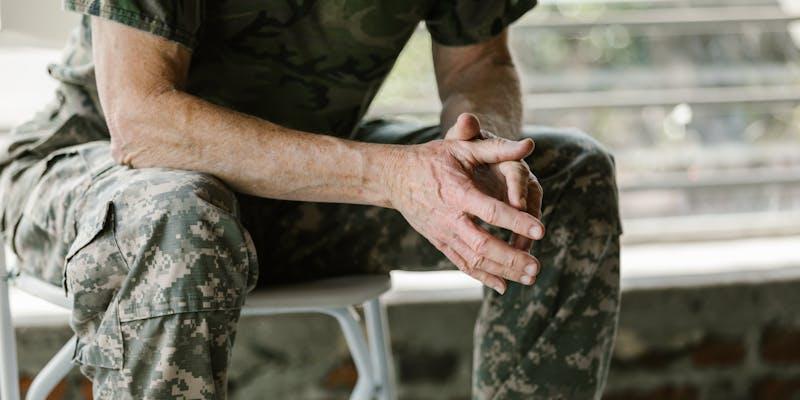A Beginner's Guide to VA Life Insurance - Pros and Cons
May 12, 2024 By Triston Martin
The Veterans Administration offers numerous benefits to armed forces members, both active and retired, and those of their families are entitled to them. Those family members who are of current duty personnel, veterans who retired, and veterans with disabilities have benefited from the VALife insurance program from the very beginning, which was started in 1965.
For confirmed wrecks of veterans, Prudential Life Insurance, a solid insurer, is the underwriter. Please bear in mind that these plans are not only different but also in addition to other civilian coverage solutions offered by Prudential. The VALife provides life insurance for military personnel during active duty and after retirement. There are many Prudential-insured policies, and in this article, we will read about them all.
VA Life Insurance Plans

Servicemembers Group Life Insurance
VALife is for active Army, Navy, Air Force, Coast Guard, and Marines. Cadets, NOAA or USPHS commissioned personnel, IRR volunteers, and select reserve members are also eligible for this VALife premiums insurance.
Monthly basic premium payments of $0.06 for $1,000 of coverage are a maximum of $400,000, which may be purchased in $50,000 increments. SGLI expires 120 days after leaving service, and if disabled workers qualify, they may obtain a free two-year extension. Reserves have part-time SGLI coverage.
Family Servicemembers Group Life Insurance
A family servicemember group can obtain the FSGLI policy if their spouse and children depend on it. Army, Air Force Reserve, or National Guard-ready reserve status members with previous SGLI coverage qualify for this service.
Through FSGLI, a $10,000 life insurance policy will cover Service members for each dependent child, and the veteran will not have to pay anything for this coverage. While such an amount shall not exceed SGLIs total coverage limit, a spouse can purchase additional insurance up to $100,000. At the levels of age groups, FSGLI has coverage costs that start at $0.045 and rise as high as $0.45 per $1,000.
Veterans Group Life Insurance
Your VGLI plan could be covered even as you begin civilian life after leaving the military. The deadline for the VGLI application is one and a half years from the date you leave your military service. VGLI VALife premiums insurance, within this timeframe, could be issued either upon retirement or upon separation from the military.
The coverage amounts of $10k to $400k that VGLI offers are limited, and you can only buy the sum you made as part of SGLI. A ceiling of $250,000 until 60 may be increased by $50,000 every five years until 80, up to $400,000. You may join VGLI without medical examination if you join within six months after your military release.
For $1,000 of coverage, the VGLI costs $0.07 to $0.45, stratified by age. Proof of insurability is unnecessary when converting your VGLI coverage to civilian whole-life insurance via a partner company.
Traumatic Injury Protection Program
Automatically, each service member with this SGLI policy claimed is also covered for severe trauma by the TSGLI policy. The VFW demands that the TSGLI award for lost fingers be reviewed. To make payment, one must currently lose the thumb or four fingers.
The VFW observes that losing fingers affects a person's flexibility, ability to execute difficult jobs, and psychological and physical well-being. By the VFW's recommendation, reimbursement should be permitted under TSGLI on a "per digit" basis.
Pros Of VA Life Insurance

Available In Every State
Every state in the union and Washington, D.C. provides VALife insurance coverage. This guarantees the availability of these crucial financial safeguards to veterans and active military personnel throughout the country. VALife insurance coverage is available regardless of location, whether in Maine or California.
Equal Premiums
A notable benefit of VALife insurance coverage is the uniformity of rates across health and medical history. Thus, the worry of higher rates due to medical issues is resolved. Financial planning might be more predictable and stable when your premiums are based only on your age and selected coverage limits, even if there could be an initial need to demonstrate your insurability.
Free Inclusive Riders
Cost-free valued riders are covered by VALife insurance. Examples of these include a waiver of premium rider and expedited death benefits. Suppose an insured is found to have a terminal disease. In that case, they may obtain a part of their death benefit via the accelerated death benefit, which helps them through a difficult period financially. The policyholder won't have to pay premiums to have coverage if they become completely handicapped, thanks to the waiver of premium rider.
Unlimited Age Coverage
Unlike many commercial insurance plans, VALife insurance has no maximum age restriction for coverage. After leaving the military, plans offered by Veterans' Group Life Insurance (VGLI) are renewable term VALife premiums insurance that may be kept for an unlimited time with proper premium payments. The cost of VGLI does, however, rise with age, reflecting the increased risk that comes with becoming older.
Benefits For Terminal Illness Accelerated
Through accelerated benefits offered by VALife insurance, policyholders who are diagnosed with terminal illnesses and given nine months or less to live can receive a portion of their death benefit early. This crucial provision makes it easier for people to get financial aid when times are tough. However, specific standards must be met to qualify for expedited benefits.
Cons Of VA Life Insurance
Exclusive Military Coverage
Military members on active duty, in the reserves, or who have retired may benefit from a special kind of life insurance the VA provides. Members, cadets, volunteers, and their families may also access it. This kind of coverage is exclusive, meaning civilians cannot purchase it. In light of their particular dangers and circumstances, this limitation is justified by the need to provide tailored benefits and assistance to those who have served or are currently serving in the military.
Non-Accruing Value
VALife insurance doesn't provide dividends or build assets like other types. It aims to pay beneficiaries when the insured dies. Even though it doesn't invest or create capital, VA life insurance financially protects military soldiers and their families. Policyholders who understand these details may help them choose VALife premiums insurance.

A Beginners Guide to Ordinary Shares - Its Benefits and More

Understanding Bonds and Investment Opportunities

All About International Tax Competitiveness Index 2022

Business Equity Loans Explained: Which Option Suits Your Needs

The Gamma Squeeze: What Is It?

Hiring a Business Tax Accountant: Key Considerations Guide

All About the Fractional Investing: Get Started in the Market Without Much Money

Back Tax Relief: How To Get Rid Of Them

Unintended Harm: Is Fraud Prevention Hurting Financial Inclusion?

